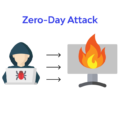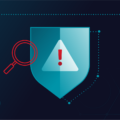As an IT professional, you understand the importance of keeping your computers and networks secure. That’s why you should consider using application whitelisting software. Application whitelisting is the practice of allowing only approved applications to run on a computer or network. This helps protect the system from malicious software and other security threats.
Application whitelisting software is a powerful tool for managing which applications are allowed to run on a computer or network. It works by creating an index of approved software applications or executables that can be used on the system. The software then monitors for any changes or additions to this list, ensuring that only approved applications are present and active on the system at all times.
Using application whitelisting software can help protect your computers and networks from malicious attacks and other security threats. It also helps streamline IT processes, by providing an easy way to manage which applications are allowed to run on a system. Additionally, it can be used to create policies that control which users have access to certain applications, helping keep sensitive data secure.
Setting up application whitelisting software is fairly simple. Most whitelisting solutions come with an intuitive interface that allows you to configure settings quickly and easily. The process typically involves specifying which applications are allowed to be present and active on the system, as well as adding various components such as plugins, extensions, libraries, or configuration files if needed.
Once you have configured your settings, it’s important to regularly check in with your application whitelist solution to ensure that only approved applications are running on your systems at all times. This will help keep your computers and networks safe from malicious attacks and other security threats.
Ultimately, application whitelisting is an essential part of any effective IT security strategy — and with the right application whitelisting software in place, you can rest assured that only approved applications are running on your systems at all times.

The Benefits of Using Application Whitelisting Software
Application whitelisting software is a type of security solution that uses a database of approved applications and executable files to protect computers and networks from malicious software. This database is used to identify which applications are allowed to be installed, run, or accessed on the system. The whitelisting process typically involves an administrator setting up an index of approved applications. The software then monitors the system for any applications that are not included in this list and blocks them from running. This helps protect devices from potentially harmful applications, viruses, malware, and other cyber threats. Additionally, whitelisting can help improve system performance by preventing unauthorized programs from running in the background and consuming resources.
Example of Application Whitelisting
An example of application whitelisting is a system that only allows certain applications to be used on a computer or network. For instance, you may have an application whitelist that only allows certain web browsers, email clients, media players, and other software to be installed and run. This ensures that if any malicious applications are downloaded or installed, they will not be able to execute on the system. Additionally, application whitelisting can also filter by version number and file hashes to ensure that only specific versions of the software are allowed.
Whitelisting an Executable
To whitelist an executable, go to Start > Settings > Update & Security > Windows Security > Virus & threat protection. Under Virus & threat protection settings, select Manage settings, and then under Exclusions, select Add or remove exclusions. Select Add an exclusion, and then select from files, folders, file types, or processes. Select the executable you wish to whitelist and click Add. The executable will now be whitelisted and any associated threats will be excluded from scans in the future.
The Difference Between Whitelisting and Firewall
Whitelisting and firewalls are two different ways to control network access. Whitelisting is a proactive approach that allows specific IP addresses or ranges of IP addresses to bypass the firewall and connect directly to the network. This is ideal for trusted sources, such as business partners or customers. Firewalls, on the other hand, are reactive and use rules to filter out unwanted traffic. All incoming traffic must pass through the firewall before it can access your business’s network. If the traffic doesn’t meet the criteria of your firewall rules, it will be blocked from accessing your network. Whitelists can be used in conjunction with firewalls to provide added security for your network.

Source: csoonline.com
The Benefits of Application Whitelisting
Application whitelisting provides numerous benefits to organizations. Allowing only authorized software to execute on your systems, it helps protect against malicious software, such as viruses, Trojans, and ransomware. It also reduces the risk of accidentally running a malicious program that could cause harm to your network or data. Additionally, whitelisting can help improve system performance by eliminating unnecessary processes from running on your servers and endpoints. Finally, by limiting the number of approved applications, you can better manage the security and stability of your environment.
Limitations of Application Whitelisting
Application whitelisting is a powerful security tool that can help protect networks from malicious software and other security threats. However, it is not without its limitations. One limitation of application whitelisting is that it can be difficult to maintain and manage. Whitelisted applications must be regularly updated when new versions are released, and any changes in the system must be applied manually. This can be time-consuming and labor-intensive for IT staff, as they need to ensure all applications are up-to-date and properly configured on all systems. Additionally, there is a risk that the whitelist itself may become outdated or corrupted, leaving systems vulnerable to attack. Finally, application whitelisting may be too restrictive for some organizations as it allows only specific applications to run on systems, preventing users from running other approved apps or programs.
Conclusion
In conclusion, application whitelisting software is an effective method of protecting computers and networks from potentially malicious applications. It allows users to create a list of approved applications that are allowed to be present and active on the system, as well as any components of those applications such as plugins, extensions, software libraries, or configuration files. By using whitelisting software, users can ensure that only authorized programs are running on their systems, which helps protect against malicious threats. Additionally, whitelisting software can be easily configured and managed through Windows settings.








